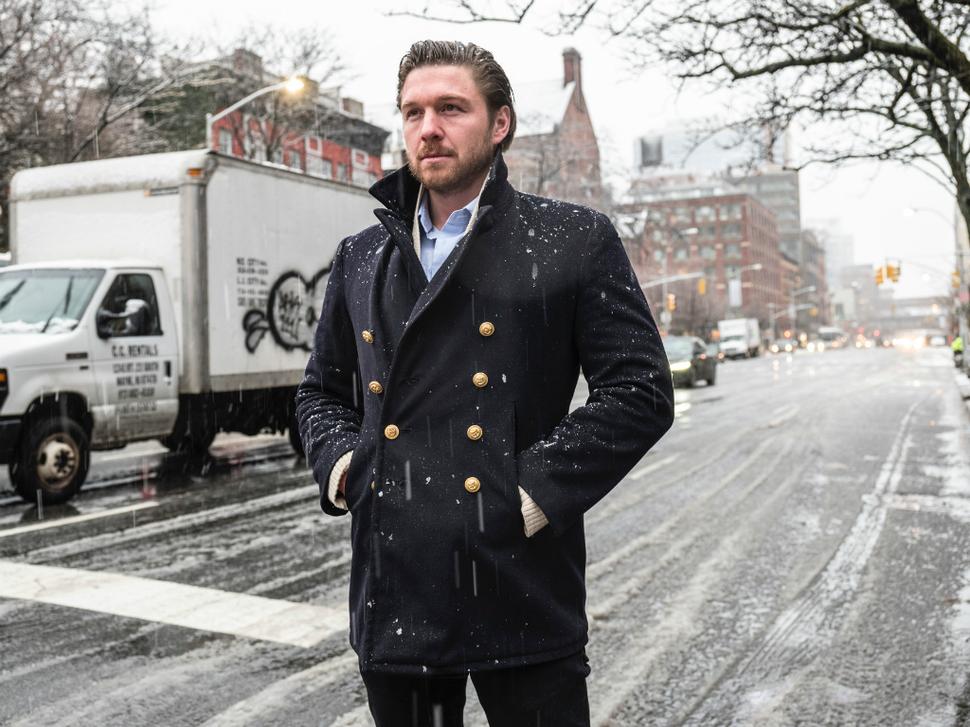
Art dealer Philippe Hoerle-Guggenheim, who has earned fawning media coverage for his flashy Chelsea gallery and famous name, is facing a lawsuit over allegedly accepting money for artworks—and then failing to deliver them.
The suit, filed February 13 in federal court in California, contends that collectors Liza Vismanos and Randy Rosen paid $520,000 for a painting by Pierre-Auguste Renoir in September, but they have yet to receive it. Hoerle-Guggenheim has also allegedly failed to send the couple a work by the street artist RETNA purchased for $90,000 and a newly commissioned work by the French sculptor Cévé for $35,000.
The plaintiffs say that some time after they paid for the RETNA work in July, Hoerle-Guggenheim—whose gallery, HG Contemporary, has locations in New York and Madrid—explained that the original piece was no longer available, but that the artist was instead creating a new commission. After months of emails back and forth, the complaint claims, Rosen and Vismanos asked for their money back for all three works. The couple say they only resorted to legal action after the dealer failed to provide evidence that the RETNA piece was forthcoming.
“If they have the money, they should return it,” says the couple’s attorney, Jonathan P. Steinsapir. “If they don’t have it, that’s a big problem. An agent is not supposed to spend his client’s money.”
Pierre-Auguste Renoir, Tête de jeune fille (1895). Photo courtesy of HG Contemporary.
Hoerle-Guggenheim’s lawyer, George Benaur, called the filing “a false lawsuit” that “misrepresents a lot of critical facts” in an email to artnet News. He noted that his client had not yet been served with the lawsuit.
“Rosen has been a longtime client of Philippe and purchased with enthusiasm many many items of value through HG Contemporary. The decision to bring a lawsuit, full of inflammatory rhetoric and light on facts, is disappointing and unnecessary,” adds Courtney Daniels, Hoerle-Guggenheim’s publicist. “While he is still reviewing the matter, he vehemently denies any allegation of impropriety or bad faith.”
“The Money and Art Never Came”
According to the lawsuit and emails reviewed by artnet News (which were provided by Vismanos and Rosen’s attorney), Hoerle-Guggenheim paid back the couple $150,000 earlier this month—but that is only a portion of the $645,000 they say they are owed for the three works. The two sides ultimately clashed over just how much the couple was owed, with Hoerle-Guggenheim disputing $200,000 of the total.
The dealer’s representatives did not address the whereabouts of the promised Renoir canvas, Tête de jeune fille, or why Hoerle-Guggenheim repaid only a portion of the total sum. (According to a PDF sent to Rosen by the gallery, the Renoir was originally purchased by the Galerie Durand-Ruel in 1897, sold to Maurice Coutot in 1937, and has been passed down to his descendants ever since.)
But Hoerle-Guggenheim denies Vismanos and Rosen’s claims that he has not provided any evidence that the RETNA and Cévé works are forthcoming. His publicist says he has provided the couple with photos, videos, and email correspondence that show the works are being completed. (An email provided to artnet News included a note from Cévé asking Hoerle-Guggenheim for a shipping label, with a planned delivery of March 2019.) The publicist adds that delays are to be expected with commissioned artworks.
But the couple isn’t buying it. “The lawyer continually changed Mr. Hoerle-Guggenheim’s story, all the time assuring Plaintiffs that the money, the art, or some mix of the two, were on their way,” the complaint states. “Needless to say, the money and art never came.”
The lawsuit also gets personal, questioning Hoerle-Guggenheim’s alleged ties to Solomon R. Guggenheim:
Defendant Philippe Hoerle-Guggenheim claims to be a “distant relative” of Solomon Guggenheim. He fashions himself as an expert in fine art. He runs art galleries, under the name “HG Contemporary,” in New York and Madrid, holding himself out as an art dealer and an expert in investing in fine art. Philippe Hoerle-Guggenheim is almost certainly none of these things. Despite his claims to being some sort of globe-trotting sophisticate, with expertise in fine art, he is nothing of the sort. Philippe Hoerle-Guggenheim is a fraud.
Hoerle-Guggenheim has described his family ties to the Guggenheim family to Fashion Week Daily, saying, “It’s distant. The Guggenheim family is originally Swiss and in the mid-1800s immigrated to America and France. I’m from the French side whereas Solomon made a significant name for himself and his family in America many years ago. My mother’s family name is Guggenheim and she came from a family of industrialists.”
Philippe Hoerle-Guggenheim. Photo courtesy HG Contemporary.
The gallerist did not respond to questions about the exact family connection or a common ancestor with Solomon R. Guggenheim when asked by artnet News. (In 2017, when Hoerle-Guggenheim was arrested for allegedly assaulting his girlfriend, he cited his family pedigree to police, according to the New York Post.)
The dealer was also named in a 2015 lawsuit filed by artist Peter Beard, who claimed that HG Contemporary did not have the rights to sell a selection of his photographs. The New York County Supreme Court ruled in Beard’s favor in June 2017.
The plaintiffs are seeking the return of their money plus 10 percent interest and “damages sufficient to punish Mr. Hoerle-Guggenheim for his despicable, malicious and fraudulent conduct, and to deter him from engaging in such conduct in the future.”